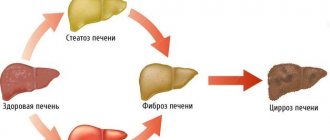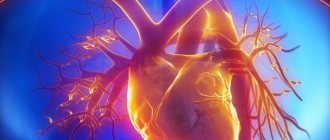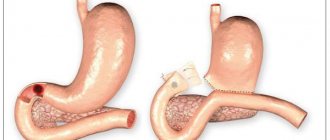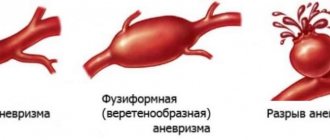The short initial part of the large intestine, located in the ileum, is called the cecum. The length of this organ, completely covered with peritoneum, can be 1-10 cm. The width is 5-9 cm. Depending on the anatomical features of the development of the body, the cecum can have different shapes:
- hemispherical (the most common);
- bay-shaped;
- saccular;
- conical;
- funnel-shaped, tapering from the base to the top.
The last case is considered anomalous. As a rule, the cecum takes on a funnel-shaped shape only in cases where the development of the intestine in the embryo is inhibited for some reason. Slightly more common are cases when the described organ in humans is, in principle, not expressed (that is, the small intestine does not pass into the cecum, but immediately into the ascending colon).
Symptoms of colon disease
Signs of this disease:
- Aching, spasmodic pain occurs in the lower abdomen, as well as in the umbilical area.
- After painful bowel movements, relief comes.
- In the absence of inflammation, eating and the occurrence of pain are not related to each other.
- Constipation appears, gradually turning into a chronic form.
- Flatulence develops (most often after eating).
- There may be blood and mucus in the stool.
Diarrhea may also appear, alternating with constipation.
Nonspecific ulcerative colitis (UC)
Several factors can provoke the development of the disease:
- heredity;
- presence of infection;
- autoimmune reactions;
- inflammatory processes.
Symptoms can be local (local) or general. The first include:
- feces mixed with mucus, blood, and sometimes pus;
- stool disorder;
- lower abdominal pain;
- flatulence.
Common symptoms include:
- increase in body temperature;
- weight loss;
- general weakness, loss of appetite;
- inflammation of the mucous membrane of the eyes;
- pain in muscles and joints.
Video about the disease with doctor’s recommendations:
Traditional therapy consists of using:
- Sulfasalazine. In the acute form, 1 g is prescribed 3–4 times a day. During the period of remission, take 0.5 - 1 g twice a day.
- Mesalazine. In case of exacerbation, 0.5-1 g is prescribed 3-4 times per day. In the remission stage - 0.5 g 2 times a day.
- Corticosteroids are used for severe UC. Prednisolone is used at a dose of 40-60 mg per day, the course of therapy is 2-4 weeks. Then the dosage of the drug is reduced to 5 mg per week.
Immunosuppressants are also used in some cases:
- Cyclosporine A. Prescribed for the acute form of the disease at 4 mg/1 kg of the patient’s body weight (intravenously).
- Azathioprine. Used orally at 2-3 mg/1 kg body weight.
In addition, the attending physician, as a rule, prescribes anti-inflammatory medications with an analgesic effect (Ibuprofen, Paracetamol). If you have UC, taking vitamins B and C is mandatory.
Diagnostics
The preliminary diagnosis of “cecal cancer” is established by specialists at the oncology clinic during the collection of complaints and anamnesis, and clinical examination. A large tumor can be detected during palpation of the abdomen. For the purpose of differential diagnosis, to clarify the location, shape and size of the tumor, and to identify metastases, additional research methods are carried out:
- Colonoscopy;
- Irrigoscopy;
- Computed tomography;
- Ultrasound screening;
- Diagnostic laparoscopy.
During an endoscopic or laparoscopic examination, doctors necessarily select material for histological analysis, which allows them to come to unambiguous diagnostic conclusions. The most informative method for diagnosing sigmoid colon cancer is rectoscopy. With sigmoidoscopy, up to 25 cm of the distal colon is examined.
The use of a flexible sigmoidoscope and colonoscope allows for more accurate preoperative diagnosis of cecal cancer. The X-ray method using a double contrast enema has great sensitivity. It allows you to detect small tumors. A malignant neoplasm manifests itself in the form of a characteristic narrowing or compaction, which is located in the contrast zone. In doubtful cases, doctors at the Yusupov Hospital repeat the examination or perform a colonoscopy.
Scanning computed tomography with air contrast is becoming increasingly widespread. This method is used when making a final decision about the need for surgical intervention. At the Yusupov Hospital, spiral computed tomography with a small slice thickness, the so-called “virtual colonoscopy,” is widely used to detect cancer of the cecum.
Colon carcinoma cells produce carcinoembryonic antigen (CEA), a tumor marker for cancer. However, it is not specific enough to serve as a reliable indicator of the existence of a tumor. Carcinoembryonic antigen is also found in pancreatitis, inflammatory bowel processes, in smokers and in people who abuse alcohol. The CEA test is used in patients with initially high levels of this tumor marker after surgery. Its level decreases after successful surgery, and an increase in CEA concentration in the postoperative period may be the first sign of tumor relapse.
Doctors at the Yusupov Hospital carry out differential diagnosis of cecal cancer with the following diseases:
- Diverticulosis of the colon;
- Ulcerative and ischemic colitis;
- Irritable bowel syndrome.
Other diseases manifested by rectal bleeding (hemorrhoids, polyposis) make diagnosis difficult. Pain in the right half of the abdomen may indicate the development of acute appendicitis. If the patient has positive symptoms of an “acute abdomen,” he undergoes urgent surgery, during which the true cause of the pain syndrome is determined.
Tubular adenoma of the cecum is a benign neoplasm. It may present with symptoms that resemble those of a cancerous tumor.
Make an appointment
Crohn's disease
Possible factors provoking the development of this disease include:
- hereditary predisposition;
- autoimmune system disorders;
- unbalanced diet;
- presence of infection in the body;
- bad habits;
- regular psycho-emotional tension, stress.
Common symptoms include:
- malaise;
- weight loss;
- increase in body temperature.
We recommend watching a video about Crohn's disease:
Local symptoms:
- systematic diarrhea;
- pain in the abdomen, similar to pain from appendicitis;
- infiltration;
- perforation of the intestinal walls;
- bleeding;
- intestinal obstruction.
Extraintestinal disorders:
- joint pain, limited mobility;
- inflammation of the sacroiliac area;
- deterioration in the functionality of the visual organ;
- skin rashes.
Aminosalicylates are prescribed as therapy. For example, Mesalazine 3-4 g/day. or Sulfasalazine 4-6 g/day, dividing the dose into 4 doses. The dosage of medications is gradually reduced after the remission stage appears.
Topographic location
Part of the cecum is projected to the right side of the groin.
As for the specific location in the abdominal cavity, in the vast majority of people the cecum is located just below the upper edge of the ileum.
That is, the organ is located closer to the front wall of the abdomen. Part of the cecum is projected onto the right side of the groin.
So, its dome is directed towards the small pelvis and is located only 5 cm above the inguinal ligament.
At the junction of the cecum with the ileum there is a special organ - the intestinal papilla. In conjunction with muscles, it is capable of acting as an anti-reflux mechanism. This device, operating on the valve principle, is called the Bauhinium valve.
Thus, from above the cecum borders on the ileum. In front - with the thin and ureter. On the right - almost in close contact with the abdominal wall. And behind and below - with sheets of peritoneum.
Diverticulosis of the colon
The main reasons for the formation of the disease:
- violation of the structure of the walls of the colon;
- dysfunction of blood vessels;
- weakening of muscle tissue.
In addition, there are factors that can provoke the development of the described pathologies:
- chronic intestinal inflammation;
- regular constipation/diarrhea;
- unbalanced diet;
- trauma/surgery;
- deficiency of useful compounds;
- natural wear and tear of muscles (in old age);
- insufficient consumption of plant fiber.
Among the signs of the development of the disease are:
- increased gas formation, bloating and rumbling in the abdomen;
- excessive salivation;
- intestinal dyspepsia;
- systematic stool disorder;
- formation of streaks of blood and/or mucus in the stool;
- feeling of nausea;
- lower abdominal pain
- fever;
- intestinal bleeding.
For uncomplicated diverticulosis, the doctor prescribes the following medications:
- laxatives (Duphalac, Romphalac, Goodluck);
- antidiarrheal drugs (Silix, Loperamide, Lopedium);
- painkillers (Drotaverine, Spazmalgon, No-shpa);
- agents that stimulate gastrointestinal motility (Motilium, Domperidone);
- enzymes (Creon, Mezim, Pancreatin);
- broad-spectrum antibiotic drugs (Amoxicillin, Ceftriaxone, Ampicillin).
In some cases, surgical treatment is used.
Colon polyps
There are several factors that can trigger the development of the disease:
- heredity;
- chronic inflammation of the gastrointestinal tract;
- endocrine system disorders;
- autoimmune diseases;
- presence of bad habits;
- frequent stress, emotional overstrain.
Polyps appear:
- alternating constipation and diarrhea;
- the formation of mucus and/or blood in the stool;
- intestinal discomfort;
- headache;
- general weakness;
- pain syndrome in the lower abdomen;
- intestinal obstruction.
In some cases, intestinal bleeding is present, which can result in anemia.
Polyps cannot be cured with the use of medications. Therapy for this pathology is carried out only by surgery.
In case of early diagnosis and treatment, the prognosis is considered favorable. Relapses are possible, which usually occur a couple of years after surgery.
Hirschsprung's disease
This disease is congenital, occurs in utero, and is hereditary.
Main symptoms:
- constipation;
- feeling of nausea;
- abdominal pain;
- gagging;
- flatulence.
We recommend a video about congenital disease in children:
Conventional treatment cannot completely cure the patient. However, it can be used to prepare the patient for surgical therapy. To do this you need:
- stick to the diet menu;
- stimulate peristalsis with massage, therapeutic exercises;
- do enemas;
- use protein preparations, electrolyte solutions intravenously;
- take vitamins.
The prognosis for Hirschsprung's disease is relatively favorable if surgical treatment is performed before complications develop.
Infectious colitis
The main cause of the disease is the presence of pathogenic microorganisms.
Infectious colitis can also occur as a result of syphilis or tuberculosis. Symptoms of the disease manifest themselves in:
- increased body temperature;
- development of diarrhea with blood and mucus;
- general weakness;
- painful sensations in the abdominal area;
- the appearance of plaque on the tongue;
- drying of mucous membranes.
The mainstay of treatment is the use of antibiotics. The doctor also prescribes enzyme preparations and probiotics. It is necessary to monitor the water regime.
In case of timely detection of the disease and its treatment, the outcome is considered favorable. An unfavorable prognosis for infectious colitis occurs when the disease progresses to a severe form. In order to prevent the development of this pathology, it is necessary to regularly wash your hands and adhere to hygiene rules.
Kinds
For cecal cancer, the TNM classification is used. In it, T denotes the size of the tumor, N – the presence of lymph node involvement, M – the presence of distant metastases. The disease occurs in 4 stages:
- Stage 0 is characterized by a very small tumor size, damage to only the upper layer of the wall of the cecum, and the absence of metastases in regional lymph nodes;
- In the first stage of cecal cancer, the pathological process spreads to the second and third layers of the colon, but does not grow to the outer side of the intestine, and there are no metastases in the lymph nodes;
- At stage II, the malignant tumor grows on the outer wall of the cecum, the lymph nodes are not affected and no metastases are observed;
- At the third stage of the disease, the tumor begins to grow into nearby organs and tissues, lymph nodes are affected, but doctors do not detect distant metastases;
- At the terminal, fourth, stage of cecal cancer, the malignant tumor begins to grow into adjacent tissues and organs, affecting the lymph nodes and revealing distant metastases.
The following histological types of cecal cancer are distinguished:
- Adenocarcinoma develops from epithelial cells of the intestinal mucosa;
- Signet ring cell carcinoma appears as blisters;
- Undifferentiated cancer is considered the most aggressive form of malignancy;
- Unclassified cancer is a malignant tumor that does not belong to any of the histological forms;
- Squamous cell carcinoma is a tumor of the cecum, which consists of squamous epithelial cells;
- Glandular squamous cell carcinoma is a neoplasm consisting of squamous and glandular epithelium.
Adenocarcinoma of the cecum can be an exophytic or endophytic tumor. It can grow into the lumen of the cecum or penetrate all layers of the intestinal wall. The tumor often grows into the bladder, uterus, appendages, prostate gland in men, small intestine, and abdominal wall. Adenocarcinoma metastasizes most often to the liver, rarely to the lungs, bone system, and brain. Adenocarcinoma can be highly differentiated and poorly differentiated. Cells of a highly differentiated tumor are close to healthy cells and are able to perform their functions. A poorly differentiated tumor consists of degenerated cells that are unable to perform their functions. Favorable prognosis in patients with well-differentiated tumors. Oncologists at the Yusupov Hospital make a diagnosis and prescribe treatment, taking into account the results of a histological examination of the biological material obtained during a biopsy.
Make an appointment
Colon dyskinesia
The causes of the disease have not yet been identified, but there are factors that can trigger its occurrence:
- systematic psycho-emotional tension, stress;
- genetic predisposition;
- unbalanced menu;
- drug abuse;
- tendency to allergic reactions;
- individual intolerance to certain products;
- lack of vitamins;
- hormonal imbalance;
- presence of infection;
- sedentary/overactive lifestyle;
- endocrine disorders;
- gynecological diseases.
We recommend a video about irritable bowel syndrome:
https://www.youtube.com/watch?v=jaiYO2zCkrI
Signs of the disease:
- stool disorder;
- flatulence;
- abdominal pain;
- nervousness, depression.
As a medical treatment, the doctor prescribes:
- Drugs that regulate gastrointestinal motility (Trimedat, Excedrin, Motilium).
- Antiemetic drugs (Cerucal).
- Antispasmodics (No-spa, Papaverine, Metacin).
The prognosis is considered favorable, but long-term remission can be achieved only in 10% of cases.
Colon cancer (Colon cancer)
Provoking factors:
- heredity;
- the predominance of animal fats and refined foods in the diet;
- unbalanced diet;
- obesity;
- physical inactivity;
- chronic constipation;
- elderly age;
- atony, intestinal hypotension in older age;
- precancerous conditions;
- working activities in hazardous industries.
Signs:
- pain in the abdominal area;
- feeling of heaviness;
- rumbling;
- loss of appetite;
- alternating constipation with diarrhea;
- flatulence;
- belching;
- intestinal obstruction may occur;
- impurities of blood and mucus in the stool;
- deterioration of general condition.
The leading method of treating the disease is surgery. Radiation therapy is used as an auxiliary treatment. Chemotherapy is used in rare cases.
With timely detection and treatment of ROC, the prognosis is favorable.
Causes
The immediate cause of cecal cancer is a cellular mutation that is not recognized by the immune system and not destroyed in time, as a result of which an endless cycle of division and growth of tumor cells is started. Malignant neoplasms of the cecum, according to experts from the World Health Organization, can develop under the influence of the following provoking factors:
- Excessive consumption of red meat that has undergone culinary processing;
- Age-related changes in tissues and weakening of intestinal motility;
- Hereditary predisposition;
- Chronic diseases and pathological conditions of the gastrointestinal tract (inflammatory, ulcerative, dyskinetic, benign neoplastic processes);
- Environmental factors;
- The presence and activity of oncogenic viruses in the body (human papillomavirus and some subtypes of the herpes virus);
- Smoking.
Scientists have not yet established a single reason why a tumor of the cecum develops.
Prevention of diseases
In order to minimize the likelihood of colon diseases, it is recommended to eat foods rich in fiber, avoid consuming unhealthy fats, promptly eliminate signs of constipation, and be more attentive to your health.
If symptoms of intestinal dysfunction occur, you should consult a proctologist.
Upon reaching the age of 50, you should visit your doctor annually and undergo a colonoscopy (even if there are no complaints).
In addition to the main treatment, the patient must adhere to a dietary menu, which is the key to successful therapy and transition to a long-term stage of remission.
Functionality
The main function of the cecum is to participate in the digestive process.
The main function of the cecum is its direct participation in the digestive process.
It is this organ that is responsible for the normal absorption of chyme (or rather, its liquid part). However, the work of the cecum cannot be called “irreplaceable”.
If its function is disrupted, the rest of the intestine will cope with the digestive process quite calmly.
A separate line should describe the functions of the appendix of the cecum. This organ does not take part in the digestive process. However, it plays a very important role in the formation of human immunity. This is where most of the lymphoid follicles are located. And the cells they produce, in turn, are responsible for protecting the body from any foreign agents.










